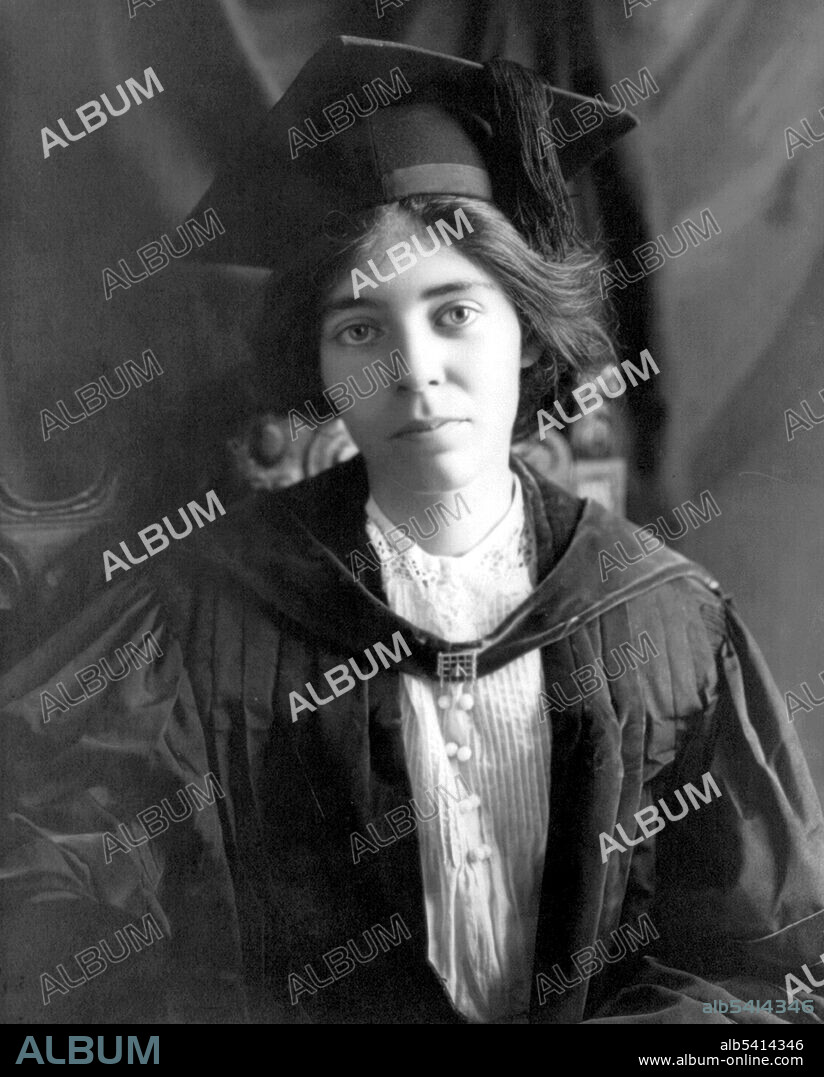alb5414346
Alice Paul, American suffragette and feminist

|
Ajouter à une autre Lightbox |
|
Ajouter à une autre Lightbox |



Avez-vous déjà un compte? S'identifier
Vous n'avez pas de compte ? S'inscrire
Acheter cette image.
Sélectionnez l'usage:

Titre:
Alice Paul, American suffragette and feminist
Légende:
Voir la traduction automatique
Alice Stokes Paul (1885-1977), American suffragist, feminist, and women's rights activist. In 1907, after completing her master's degree at the University of Pennsylvania, she moved to England, where she became deeply involved with the British women's suffrage movement. She was arrested 7 times and imprisoned 3 times. It was during her time in prison that Paul learned the tactics of civil disobedience from Emmeline Pankhurst. Chief among these tactics was demanding to be treated as a political prisoner upon arrest. When she returned to the states she became one of the main leaders and strategists of the campaign for the 19th Amendment to the U.S. Constitution. Along with Lucy Burns and others, Paul initiated events such as the Woman Suffrage Procession and the Silent Sentinels, which were part of the successful campaign that resulted in the amendment's passage in 1920. After 1920, Paul spent a half century as leader of the National Woman's Party, which fought for the Equal Rights Amendment, written by Paul and Crystal Eastman, to secure constitutional equality for women. She won a large degree of success with the inclusion of women as a group protected against discrimination by the Civil Rights Act of 1964. Taylor Studio, 1913.
Crédit:
Album / Science Source / LIBRARY OF CONGRESS
Autorisations:
Modèle: Non - Propriété: Non
Questions sur les droits?
Questions sur les droits?
Taille de l'image:
3381 x 4200 px | 40.6 MB
Taille d'impression:
28.6 x 35.6 cm | 11.3 x 14.0 in (300 dpi)
Mots clés:
AMÉRICAIN • APPARTEMENT SOUS LES TOITS • CAMERA • FEMELLE • FEMM • FEMME • MONOCHROME • NATIONAL • PERSONNE • PORTAIT • PORTRAIT • POTRAIT • SUFFRAGETTE • SUFFRAGETTES • XIXE SIÈCLE • XXE SIECLE
 Pinterest
Pinterest Twitter
Twitter Facebook
Facebook Copier le lien
Copier le lien Email
Email
